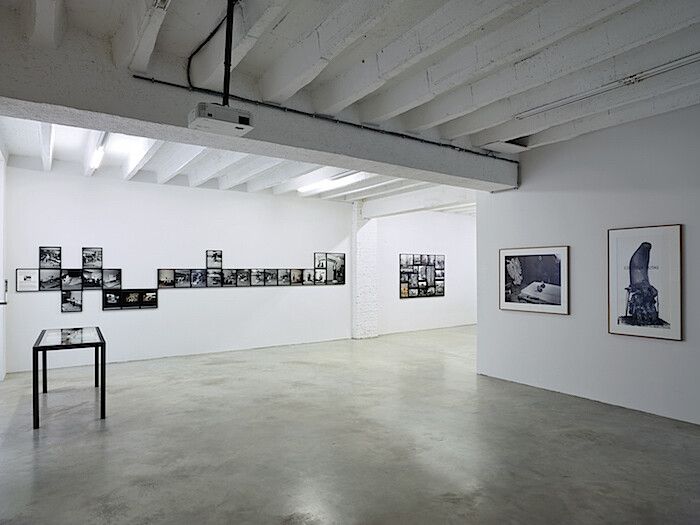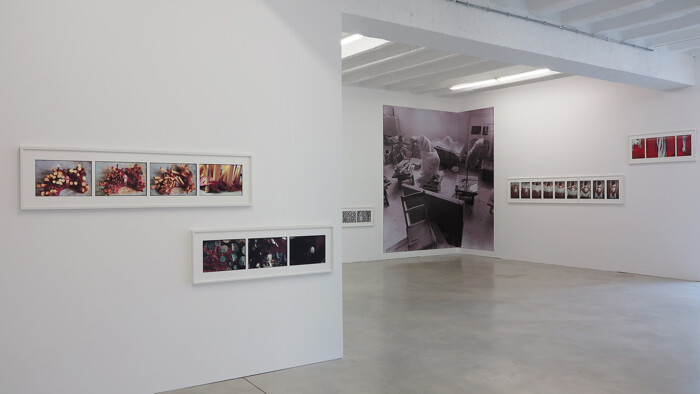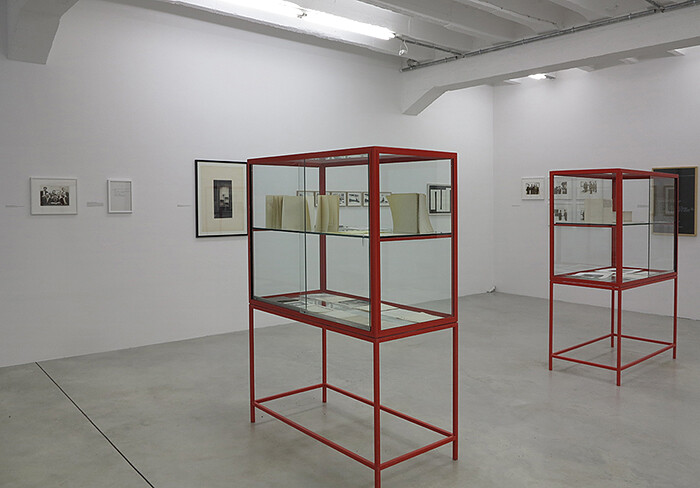Categories
Subjects
Authors
Artists
Venues
Locations
Calendar
Filter
Done
July 19, 2016 – Review
KwieKulik’s "The Monument Without a Passport"
Stefan Heidenreich

Resistance is a two-sided relation. It may also include more players, as we will discuss shortly. But losing its counterpart puts it in a difficult place. All political art has to deal with this dialectic entanglement.
In 1976, artists Zofia Kulik and Przemysław Kwiek were summoned to the Polish Ministry of Culture and Art in Warsaw. They were told that they were no longer allowed to represent Polish culture abroad. Their passports were withdrawn.
From 1971 onwards, both worked under the name KwieKulik. Until 1987, they produced what was considered one the most important bodies of political performances in Europe. In 2007, Documenta 12 showed Activities with Dobromierz (1972–74), a tableau of 48 black-and-white photographs documenting their newborn son surrounded by household objects, to be understood as a general reference to social relations and artistic practice. Then, in 2009, they were invited to the 11th Istanbul Biennial, and their work was rediscovered by a wider public.
The timing of their rediscovery—as much as the timing of the passport affair—is no coincidence. To understand the political aspects of KwieKulik’s work it is necessary to take a look at their resistance’s counterpart. In the mid-1970s, the Polish government (under First Secretary Edward Gierek, whose policy …
September 2, 2014 – Review
Zofia Kulik’s “Instead of Sculpture – Sequences 1968–71”
Karen Archey

The resuscitation of older female artists’ careers has become so prevalent in recent years that it could now be seen as a trend. Take Etel Adnan (b. 1925), Judith Bernstein (b. 1942), Dorothy Iannone (b.1933), and Maria Lassnig (1919-2014), for example. And yet, we all know how the art world reacts to trends: it hops on board for about 30 months, then eventually disgruntled murmurs start rippling throughout Kaffeeklatches and drunken confessionals. The unusual thing about this trend is that the renewed—or completely new—attention being paid to long-accomplished female artists is almost entirely justified. It could even be thought of as a necessary historical corrective to the systematic elision of female voices from most art-historical narratives. (And it’s another question entirely if there’s a market-based impetus to uncover troves of available works.) However, it’s worth mentioning such a trend, even though doing so potentially conflates the work of these incredibly diverse and deserving artists under a single “New/Old Female Artist” heading.
Enter the incredibly forward-thinking and idiosyncratic work of Polish artist Zofia Kulik (b. 1947), who is currently the subject of a monographic exhibition at Berlin’s ŻAK | BRANICKA. Until now, Kulik has primarily been known for her collaborative work with …
February 4, 2013 – Review
Gorgona’s “Please Attend”
Mara Traumane

The current exhibition at ŻAK | BRANICKA introduces visitors to one of the most elusive and imaginative phenomena of the Eastern European neo-avant-garde: the creative quests of the Croatian artist group Gorgona. The show is indicative, indeed, of a new stage of recognition of regional avant-gardes from the 1960s–1970s, with exhibitions of Romanian artists Geta Brătescu and Paul Neagu (at Galerie Barbara Weiss) and Ion Grigorescu (at Galerija Gregor Podnar) to be seen in Berlin recently, posing questions, likewise, about productive ways of reconciling radical artistic gestures that were almost always conceived in disregard of the art market. In this respect, the exhibition “Please Attend” is an interesting case study.
Active between 1959 and 1966 in the former Yugoslavia, specifically Zagreb, Gorgona was made up of a group of loosely associated artists: Marijan Jevšovar, Julije Knifer, Đuro Seder, Josip Vaništa, and Ivan Kožarić; an architect, Miljenko Horvat; and art critics Dimitrije Bašičević (aka Mangelos), Matko Meštrović, and Radoslav Putar. Following the wave of contemporary formal and perceptual explorations of proto-conceptualists such as John Cage and Yves Klein, Gorgona’s invigorating creative search was injected with a good dose of tongue-in-cheek humor stemming from Dada and Surrealism. In fact, Gorgona anticipated some aspects …
